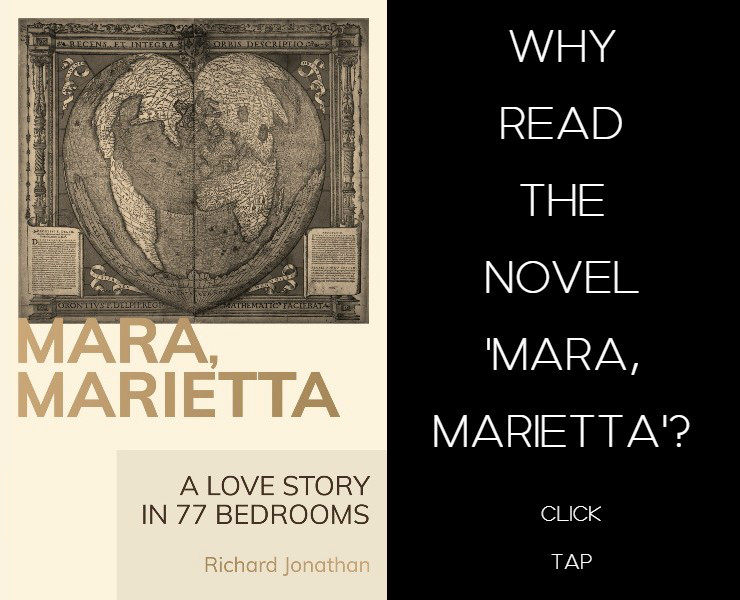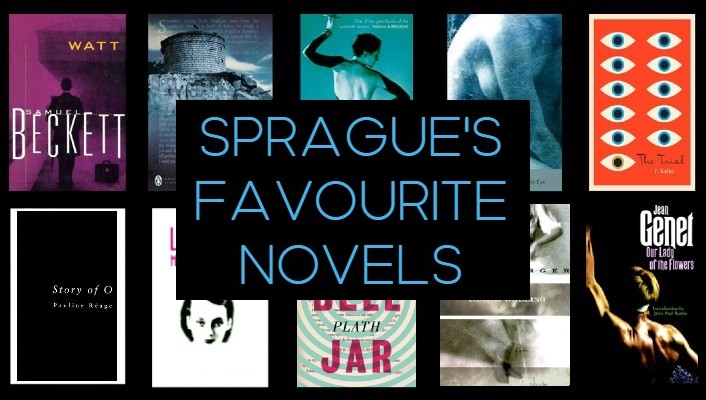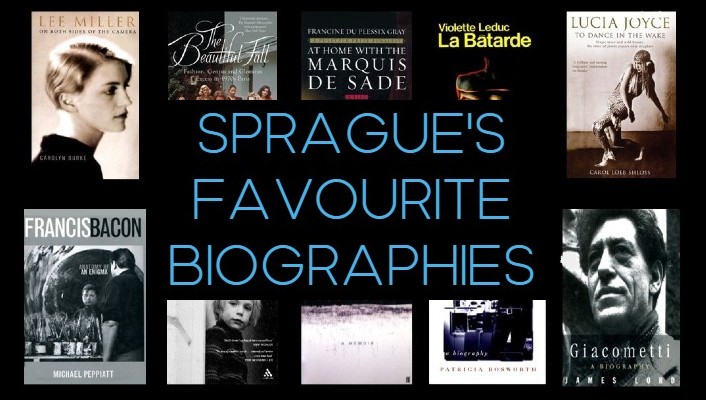ANTON CHEKHOV
Charles May on Chekhov’s Influence on the Twentieth-Century Short Story
REALITY IN THE MODERN SHORT STORY
Posted by kind permission of Charles May, Emeritus Professor of English, California State University-Long Beach
From ‘Birth of the Modern Short Story: Chekhov’, in Charles May, I Am Your Brother: Short Story Studies (2013), pp. 145-72. First published as ‘Reality in the Modern Short Story’ (Style, Vol. 27, No. 3, Fall 1993), pp. 369-79.

In the history of the development of short fiction, three major stylistic shifts have had far-reaching generic effects: the humanizing of the allegorical romance in the Renaissance, the high point of which are the novellas of Boccaccio; the psychologizing of the supernatural legend by the romantics in the early nineteenth century, best represented by the tales of Poe; and the lyricizing of the slice-of-life story by the realists in the early twentieth century, most clearly exemplified in the stories of Chekhov. I want to explore some generic innovations of the twentieth-century short story instituted by Chekhov, particularly what is meant by ‘realism’ in that form.
STYLISTIC SHIFTS IN THE DEVELOPMENT OF SHORT FICTION: BOCCACCIO, POE, CHEKHOV

Boccaccio

Edgar Allan Poe

Chekhov
I will focus on Chekhov, Hemingway, and Raymond Carver, not only because they provide a convenient continuum from early to mid to late twentieth century, but also because they are such self-conscious practitioners of the characteristics I wish to consider here: a literary technique that insists on compression, a rhetorical method that reveals meaning by leaving things out, and a language style that creates metaphor by means of metonymy. Moreover, all three authors attempt to express inner reality by describing outer reality and frequently thematize the human dilemma of trying to say the unsayable.
COMPRESSION, THE UNSAID, METONYMY: CHEKHOV, HEMINGWAY, CARVER
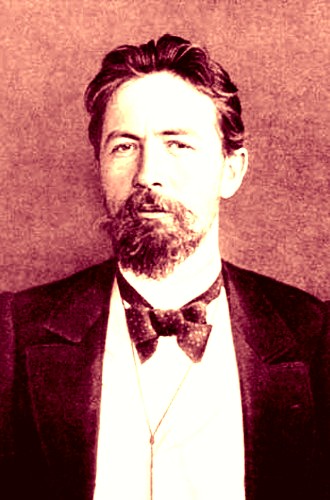
Anton Chekhov

Ernest Hemingway

Raymond Carver
First, a few generalizations about previous generic shifts in the short story are necessary. Short fiction originated with the human need to narratize the perception of spiritual eruptions in the midst of the profane everyday world—those objectifications of fear or desire that Mircea Eliade has called the ‘sacred’ or ‘true reality’ for primitive man and woman and that Ernst Cassirer has called moments of ‘mythic perception’. Although such experiences were initially recounted as revelations, the human need to create explanatory models for these experiences forced a shift away from a narrative description of the experience that gave rise to the revelation toward a unified framework of religious conceptual abstractions.
MYTHIC PERCEPTION: MIRCEA ELIADE & ERNST CASSIRER

Cassirer, Language & Myth

Yaure (Ivory Coast) face mask
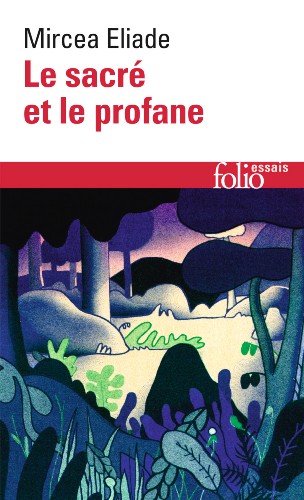
Eliade, Le sacré et le profane
By the Middle Ages, the revelatory experience had been so conceptualized that true reality was no longer seen to exist in isolated sacred moments of hierophanic encounter, but rather in a fully organized theological framework that it became the task of art to describe allegorically. This abstract distancing from actual human experience inevitably created a generic counter-reaction for a return to ‘the real,’ the most famous manifestation of which was the basic shift from the ‘divine’ comedy of Dante to the ‘human comedy’ of Boccaccio. In the Renaissance novella, the breakup of everyday reality was not the result of a perception of a sacred or mythic experience, but rather a concatenation of cosmic accident and human foible. Although this displacement toward everyday life as the subject of narrative fiction was relatively constant up through the development of the eighteenth-century novel, short fiction retained its primary purpose as the allegorical expression of the concept of spiritual reality. The clearest example of this combination of the sacred and the profane is Daniel Defoe’s ‘A True Relation of the Apparition of One Mrs Veal,’ in which the spiritual, which was previously taken on faith, is replaced by spiritualism, which has to be made plausible by techniques of verisimilitude.
FROM THE DIVINE COMEDY TO THE HUMAN: DANTE TO BOCCACCIO

Dante, The Divine Comedy

Daniel Dafoe, Apparition

Italian Renaissance Tales
In the nineteenth century, the German, English, and American romantics initiated a shift toward the rediscovery of the sacred by a return to the revelatory encounter. However, in order to preserve the old religious values without their mythological trappings, the romantics secularized the religious encounter by perceiving it as a basic psychic process. The positioning of a real speaker in a concrete situation encountering a particular phenomenon that his or her own subjectivity transformed from the profane to the sacred is the basic characteristic of English Romantic poetry. Prose narrative manifested a similar configuration of the spiritual and the everyday. For example, the gothic romance form was combined with the new realism to give rise to the novelle of ‘poetic realism’ in Germany, and Flaubert and Maupassant provided a naturalistic base for folk legends and tales of the supernatural in France. In America, Washington living grounded mythic European legends in native social life; Hawthorne transformed the stuff of spiritual allegory into symbolic moral dramas; and Poe concretized the German gothic romance by basing its projective desires on psychological obsessions.
AMERICAN TRANSFORMATION OF MYTHIC EUROPEAN LEGENDS

Washington Irving, The Sketch-Book

Nathaniel Hawthorne, The Scarlet Letter

Edgar Allan Poe, Narrative-Pym
In the latter part of the nineteenth century, especially in America, this romantic impulse in short fiction became highly imitated and frequently trivialized: Irving’s neoclassical sketches became local-color tales; Hawthorne’s morality plays became sentimental melodramas; and Poe’s unified metaphysical tales became the ironically patterned stories of Ambrose Bierce and O. Henry. With few exceptions—primarily the impressionistic stories of James, Crane, and Conrad—the short story was seen at this time as an insignificant form, not worthy of serious critical attention. When Chekhov’s stories began to appear in English at the turn of the century, he was accepted primarily as a realist or naturalist who provided a welcome relief from the artificial O. Henry type story.
IMPRESSIONISTIC STORIES: HENRY JAMES, STEPHEN CRANE, JOSEPH CONRAD

Henry James

Stephen Crane
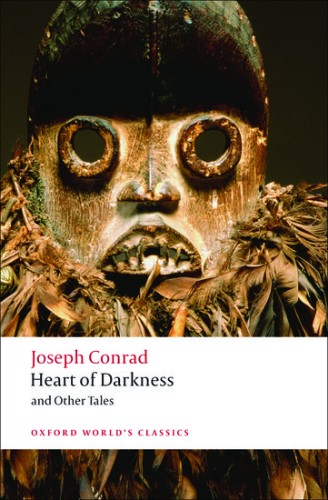
Joseph Conrad
In 1899, American novelist Abraham Cahan said that one of the most striking features of Chekhov’s stories was their ‘naturalness,’ that his genius was best seen in stories that are so ‘absolutely storyless that there is not enough even to fill a nutshell’. In 1915, literary historian H. S. Canby argued that whereas American stories, à la O. Henry, were based on literary convention, Chekhov’s stories were based on life. Joining the chorus of writers and critics who welcomed Chekhov’s realism because it rescued the short story from the artificial ironic pattern that typified the form at the time, Leonard Woolf suggested that Chekhov had the ability to show ‘exactly what a little piece of life is like,’ and E. M. Forster noted that Chekhov’s highest gift was negative in that he did not write stories with the conventional snap.
THREE EARLY ADVOCATES OF CHEKHOV: L. WOOLF, A. CAHAN, E.M. FORSTER

Leonard Woolf

Abraham Cahan

E.M. Forster
However, these very characterizations of Chekhov’s short fictions as storyless, artless, and lifelike posed an obvious problem. The critics of the time were not sure how to apprehend an artistic pattern in stories that seemed patternless or to describe the causal in stories that seemed so casual. Gradually, some critics began to suspect that more art was involved in Chekhov’s stories than appeared on their deceptively casual surface. In addition to calling him a realist, for example, E. M. Forster suggested that Chekhov was primarily a poet. John Middleton Murry argued that Chekhov’s stories were more ‘nakedly aesthetic’ than those of any writer before him, while Conrad Aiken claimed that Chekhov’s genius was primarily lyrical in that he manipulated feeling or mood rather than plot or thought. These opposing opinions—that Chekhov’s stories were ‘realistic,’ ‘natural,’ and ‘storyless’ and at the same time ‘poetic,’ ‘lyrical,’ and ‘aesthetic’—still left many critics frankly puzzled about how to understand them.

Pyotr Nilus, Portrait of Anton Chekhov, c.1902
This Chekhovian uniting of the lyrical and the realistic has since been called a basic characteristic of the modern short story by a number of short-fiction writers and critics. Eudora Welty once noted that all stories by a writer come from some source within: ‘All of one writer’s stories must take on their quality, carry their signature, because of one characteristic lyrical impulse of his mind—the impulse to praise, love, to call up, to prophesy’. Sean O’Faolain has called the form an ‘emphatically personal exposition’, while William Carlos Williams said that he thinks it a good medium for ‘nailing down a single conviction. Emotionally’. V. S. Pritchett once suggested that the good short-story writer knows he is putting on a personal individual act; he catches ‘a piece of life as it flies’ and makes ‘his personal performance out of it’. And Elizabeth Bowen has said that the first necessity for the short story is ‘necessariness’. She further suggested that the short story must spring from an impression or perception pressing enough to have made the writer write. It should have the ‘valid central emotion and inner spontaneity of the lyric’.
CHEKHOV: UNITING THE LYRICAL AND THE REALISTIC

Sean O’Faolain, The Short Story

Eudora Welty, Eye of the Story

V.S. Pritchett, Chekhov
However, the problem is that although many agree that the short story springs from a subjective, lyrical impulse, Chekhov insisted, and many other writers have agreed, that the writer maintain a distanced objectivity from the story. Chekhov once warned a colleague, ‘Subjectivity is a terrible thing. It is bad in this alone, that it reveals the author’s hands and feet’. At another time he urged, ‘You may weep and moan over your stories, you may suffer together with your heroes, but I consider one must do this so that the reader does not notice it. The more objective, the stronger will he the effect’. However, determining how the stories of Chekhov are both subjective and objective at once still remains a critical problem.

Osip Braz, Portrait of Anton Chekhov, 1898
Virginia Llewellyn Smith’s observations about one of Chekhov’s best-known stories, ‘The Lady with the Dog,’ is typical. She notes that the plot of the story is obvious, even banal, and that its merit as a work of art lies in the artistry with which Chekhov has preserved in the story a balance between the ‘poetic and the prosaic’. Indeed, the tension between the poetic and the prosaic constitutes the basic structure and theme of the story. The structural core of ‘The Lady with the Dog’ centers on Dimitri Gurov’s discovery that he has two lives: one open and seen like everyone else’s and another, ‘which flowed in secret’. He feels that everything at the center of his life is hidden from others, while all that was false was open. Thus, he realizes that every individual life rests on secrecy, and he anguishes over how to get rid of its necessity. The secrecy of Dimitri’s idealized desire constitutes true reality for him just as the sacred constituted true reality for primitive man and woman. Indeed, in the modern short story, idealized human desire—unsayable, unrealizable, always hovering, like religious experience in the realm of the ‘not yet’ —replaces the sacred revelation embodied in primal short-fiction forms.
CHEKHOV: THE POETIC AND THE PROSAIC IN TENSION

Chekhov, About Love
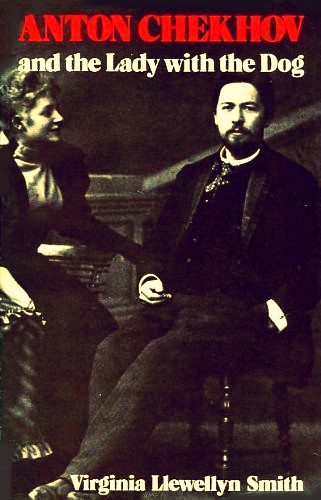
Virginia Llewellyn Smith, Chekhov

Chekhov, Lady-Little-Dog
A helpful suggestion about the modern short story’s characteristic balancing of the lyricism of the private life with the realism of public life has been made by Georg Lukács in his pre-Marxist Theory of the Novel. Perceiving the short story as a fictional form that deals with a ‘fragment of life’ lifted out of life’s totality, Lukács says the implication of this delimitation is that the form is stamped with its origin in the author’s ‘will and knowledge.’ The form is inevitably lyrical because of the author’s ‘form-giving, structuring, delimiting act’. Its lyricism lies in ‘pure selection.’ Yet, for all this lyricism, the short story must deal with event, says Lukacs; the lyricism is concealed behind the ‘hard outlines of the event.’ And it is the concrete event that communicates the poetic intensity of the modern short story. Flannery O’Connor has claimed, ‘The peculiar problem of the short-story writer is how to make the action he describes reveal as much of the mystery of existence as possible. His problem is really how to make the concrete work double time for him’. The result, as Raymond Carver says, is to endow commonplace things with immense power.
THE MODERN SHORT STORY: PRIVATE LYRICISM / PUBLIC REALISM

Georg Lukács, La théorie du roman

Raymond Carver, Fires [essays]

Flannery O’Connor, Mystery & Manners
In the romantic story, à la Poe, reality is radically subjective, for the typical Poe teller is caught in a psychologically obsessive reality that swallows it up. However, reality in the modern short story seems to be a purely objective event, even as at the same time the intense selectivity practiced by Chekhov, Hemingway, and Carver results in an intensification of reality that no longer seems objective and real, but what recent critics have called ‘hyperrealism’ in Carver’s stories. In Hemingway’s and Carver’s stories, reality is so attenuated and restricted (rather than developed and expanded as in the realistic novel) that it takes on an hallucinatory, dreamlike effect even when the events occur in the wide-awake daylight of the everyday world. The result in Hemingway’s stories, notes Carlos Baker, is a sense of ‘noonday nightmares’. The reason for this effect, Baker suggests, is that although Hemingway’s stories are naturalistic in that they present visible reality as hard facts, at the same time they have a post-symbolist structure.
INTENSE SELECTIVITY: CHEKHOV, HEMINGWAY, CARVER

Chekhov, The Steppe

Raymond Carver, What We Talk…

Ernest Hemingway, Cuentos
When a story presents ‘hard facts’ within a symbolic structure, objects and events are transformed from mere matter into meaningful metaphors by the motivating force of the story’s own thematic and structural demands. For example, in Hemingway’s ‘Hills Like White Elephants,’ the spatial symbolism of the story, in which the characters are positioned between two railroad tracks—each for trains going in opposite directions from the other—and between two kinds of landscape—one alive and green and one brown and dead—is motivated by the basic inescapable nature of the conflict between the characters, not by the realistic necessity of verisimilitude. The temporal symbolism of the story also derives from and reflects the story’s thematic and aesthetic demands rather than the need for verisimilar sequence. The discrepancy between the dramatic time of thirty-five minutes between trains during which the dialogue-based story takes place and the ten to fifteen minutes of real time required to deliver realistically that dialogue suggests that this story contains more silence than speech. And indeed, like Chekhov’s ‘The Lady with the Dog,’ ‘Hills like White Elephants’ is a story about a human dilemma that no amount of talking can resolve.
‘HARD FACTS’ INTO METAPHORS: HEMINGWAY

Short Stories of Ernest Hemingway

Hemingway: The Writer as Artist

Ernest Hemingway on Writing
In the old allegorical tale or romance form, the received traditional conventions of the story or its underlying conceptual framework justified the structure of its events. In the romantic Poe tale, the obsessed mind of the teller or central character created the hallucinatory world of the story. In the O. Henry type of story the ‘reality’ of the fiction derived from the preconceived ironic pattern that governed or motivated its events and objects. In the modern short story, no received tradition, obsessed narrator, or calculated pattern exists to justify or motivate its tightly unified structure. However, in spite of what seems to be a realistic style in which events are motivated primarily by metonymic sequence and verisimilitude, modern realistic stories are still able to create a metaphoric sense of reality.
RECEIVED TRADITION, OBSESSED NARRATOR, CALCULATED PATTERN: ROMANCE FORM, POE, O’HENRY
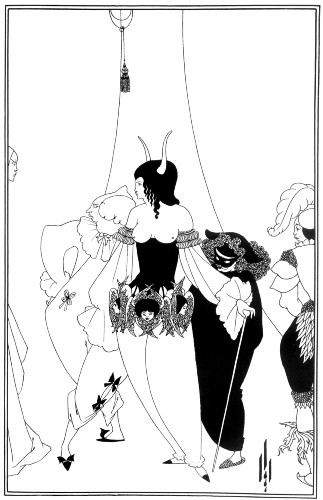
Beardsley – Poe | Masque-Red-Death

Le Roman de la Rose

Grant – O’Heny | Ransom-Red-Chief
Roman Jakobson’s famous distinction between the metaphoric and the metonymic poles of discourse may provide some help in understanding this problem. Jakobson chides literary critics for paying so much attention to the principle of metaphor in poetry while ignoring the principle of metonymy in prose, noting that prose is often neglected because its verbal devices are unostentatious and seem transparent, and the parallelisms are less obvious. The metonymic style of realism in the modern short story compels the reader to transform sequence into equivalence and to spatialize the temporal in order to make metaphorically meaningful that which at first seems merely contiguous. Realism in the short story, in other words, is not the same as realism in the novel. Realistic long fiction, which develops on the principle of combination, primarily leads away from parallelism, moving further away from a core subject, elaborating by dealing with all those elements contiguous with it. However, as Lukács has pointed out, the short story’s method is lyrical and concentrative rather than realistic and expansive.

Metaphor and Metonymy | Diagram: Springer Link
The novel form usually gains the reader’s assent to its reality by the creation of enough metonymic details to make readers feel they know the experience in the same way they know external reality. However, in the realistic short story, metonymic details are transformed into metaphoric meaning by the thematic demands of the story that organize them by repetition and parallelism into meaningful patterns. For example, the hard details of the external world in Robinson Crusoe exist as an external resistance to be overcome.
EXTERNAL RESISTANCE: ‘ROBINSON CRUSOE’

Robinson Crusoe: Penguin

Robinson Crusoe: Oxford

Robinson Crusoe: Norton
However, in Hemingway’s ‘Big, Two-Hearted River,’ the extensive metonymic details exist primarily to provide an objectification of Nick’s psychic distress. As opposed to Crusoe, Nick is not concerned with surviving an external conflict but rather an internal one. In ‘Big, Two-Hearted River,’ the story’s obsessive focusing on the external world does not derive from the metonymic compulsion to combine details, but the metaphoric need to select, repeat, and thus understand the essence of the experience the details create. The result is a sense of a ritual activity, which Baker says is largely responsible for the ‘noonday nightmares’ effect of Hemingway’s stories. The hard material outlines of the external world disappear as metonymic material metaphorically objectifies that which can neither be seen nor said. Thus, at the end of Hemingway’s story, Nick’s refusal to go into the swamp is a purely metaphoric refusal, having nothing to do with the real qualities of the swamp, only its aesthetic qualities.
INTERNAL RESISTANCE: ‘BIG, TWO-HEARTED RIVER’

Paul Cézanne, In the Forest, 1899
The effect created in the realistic novel is that the story could go on and on, including digressions, extended descriptions, more developed dialogue, more development in time; things move outward in a continually enlarging circle, metonymically encompassing more and more, conceivably all of human experience. In the modern short story, there is an opposite effect of compression that derives from the form’s development of what John Dewey calls ‘an experience.’ As Dewey says, ‘an experience,’ as opposed to continuous experience, is marked off from the flow of life by the unity of that experience. ‘The existence of the unity is constituted by a single quality that pervades the entire experience in spite of the variation of its constituent parts.’ Emotion, says Dewey, is the motivating force. ‘It selects what is congruous and dyes what is selected with its color, thereby giving qualitative unity to materials externally disparate and dissimilar. It thus provides unity in and through the varied parts of an experience’.
JOHN DEWEY: EMOTION GIVES EXPERIENCE UNITY

John Dewey

John Dewey, Art as Experience

Albert Barnes & John Dewey
This focus on ‘an experience’ explains why tone rather than narrative event holds the modern short story together. Just after the turn of the century, Canby called attention to the fact that the art of modern short fiction was as much that of tone as incident. The work of the author in the story is ‘harmonized into one tone, as if narrative were a painting’. Many years later, Irving Howe argued:
If the short-story writer is to create the illusion of reality, he must sing mostly aria and very little recitative. As a result, he uses a series of technical devices. often quite simple inflections of style, the end effect of which we call the story tone. A novel written in one dominant tone becomes intolerable; a story too often deviating from it risks chaos.
TONE, NOT EVENT, HOLDS THE MODERN SHORT STORY TOGETHER

Ilya Repin, Vsevolod Mikhailovich Garshin, 1884
The unified tone of the modern short story suggests that by breaking into the temporal flow of life and infusing it with the perspective of the teller, the realistic short story creates not a ‘slice of life’ (which suggests an arbitrary delimitation), but rather a subjectively charged experience motivated by the teller’s need to discover and reveal meaning. The problem for the writer then becomes how to transform a series of real events into something more than mere events, something that has meaning. Although generally the realists rejected the Emersonian belief that ‘every natural fact is a symbol of some spiritual fact,’ short-story realists still insisted that natural facts arranged within an aesthetic pattern can resonate with meaning. Thus, in the modem short story, the only order possible is aesthetic order, and the only resolution possible is aesthetic resolution. It is as if short-story writers, while dismissing the supernatural as unknowable, focus on another kind of unknowable: the unsolvable and unsayable elements of idealized human desire.
FOCUS: THE UNSAYABLE ELEMENTS OF DESIRE

Ilya Repin, Portrait of N.I. Repina, 1896
Erich Heller has said that what was new about nineteenth-century realism was ‘the passion for understanding, the desire for rational appropriation, the driving force toward the expropriation of the mystery’. However, because the short story always deals with something that breaks up the everyday, if this breakup cannot be integrated, explained, incorporated, or articulated, then the story is not realistic. The transition from the romance form to the short-story form in the nineteenth century is marked by a combination of real and unreal characters in the same story. For example, the ‘real’ narrator is unable to account for the unreal Bartleby in Melville’s famous story, and the ‘real’ narrator in Poe’s best-known story cannot integrate the idealized unreality of Roderick Usher.
CHARACTERS REAL & UNREAL
Melville’s narrator vs. Bartleby, Poe’s vs. Roderick Usher

Melville, Billy Budd, Bartleby…

Modern Literary Realism

Poe, Fall-House-Usher
However, when all the characters in the story are ‘real,’ as they are in the modern realistic story, it is the structure of the event itself that seems unreal and that retains something of the old mystery of the romance. Such disruptions as an unexpected death in Chekhov’s story ‘Misery,’ the breakup of a relationship in Hemingway’s ‘Hills Like White Elephants’ and Carver’s ‘Why Don’t You Dance?’ and the psychic effects of war in ‘Big, Two-Hearted River’ throw characters out of their ordinary world in much the same way that supernatural encounters did in the old romance tale. Fully mimetic characters in a story do not make the story realistic if the situation they confront eludes their power to incorporate it within a framework of the familiar, natural world. The realistic impulse creates a realistic story only when it succeeds in convincing the involved character or the reader that the mystery confronted has been, or can be, integrated.

Ilya Repin, Unexpected Return, c.1886
When a character moves from ignorance to knowledge—a common structural device in the realistic novel—this indeed means he or she has been able to bring the confronted experience or phenomenon within the realm of the naturalistic, cause-effect world. If, however, the knowledge arrived at is metaphysical and inchoate—that is, not satisfactorily the knowledge of social, natural, psychological frameworks—then it remains revelatory, intuitive, unsayable. Revelation does not necessitate change if what is revealed is some aspect of human behavior that cannot he accounted for socially, naturalistically, psychologically, or is so morally intolerable or impossible that no change in the perceiver can effect any change in the basic situation: in short, when nothing can he done about it and when language seems inadequate to express it.
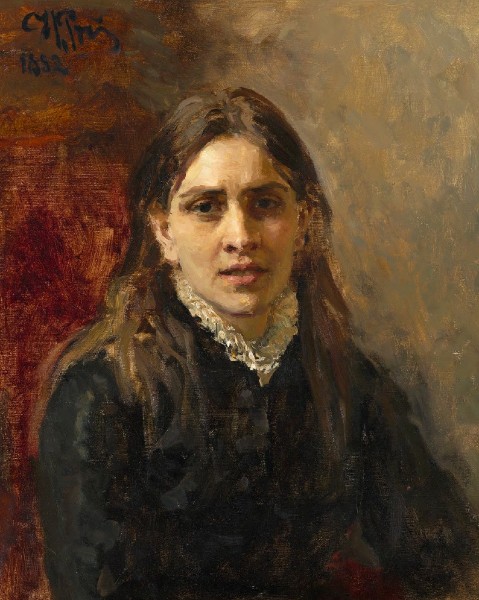
Ilya Repin, Portrait of the Actress Pelageya Strepetova, 1882
The problem Chekhov faced, dramatized, and thematized so clearly in one of his best-known stories, ‘Misery,’ is how to communicate an inner reality that a character cannot express by describing an action in such a way that, if ‘expressed properly,’ it will embody the complexity of that inner state. The fact that the old cab-driver’s son’s death is a ‘strange thing’ or a ‘queer business’ is communicated by the combination of his inexpressible grief and the need of his two fares to get somewhere. While they want things to go on, Iona wants everything to stop. Moreover, this inexpressibility is manifested by the juxtaposition of lona’s loneliness and pathos against the absurdity of the stick-like, gingerbread horse who seems in deep thought.

Ilya Repin, Cautious One, 1877
Raymond Carver’s ‘Why Don’t You Dance’ is a particularly pure example of the Chekhovian story’s convention of trying to express inner reality by focusing on outer reality. The unnamed man in the story has arranged all his furniture out on his lawn just as it was inside as an external manifestation of his inner life. Although Carver does not tell us that the problem here is that the man’s marriage has broken up, the single reference to a nightstand and lamp for ‘his’ side of the bed and ‘her’ side of the bed is sufficient to signal the meaningful absence of his wife.

Wim Wenders, Don’t Come Knocking
The young couple who come by and make offers for the man’s furniture lie on the bed, turn on the television, and in short act out their own daily activities on the remnants of the man’s lost relationship. They sense something strangely meaningful about the situation but can only express it elliptically. The girl only says, ‘Wouldn’t it be funny if…’ but does not complete the sentence. There is something of the Ancient Mariner in the protagonist in ‘Why Don’t You Dance?’ However, what holds us is not his voice, but rather Carver’s objectification of his intolerable and inescapable situation. There is also something of the Mariner in the girl, who keeps telling the story over and over because she feels that ‘there is more to it, and she was trying to get it talked out’. However, denied the symbolic language of the Ancient Mariner, modern short-story characters are less driven by the compulsion to repeat their stories than they are to re-enact them.

Wim Wenders, Don’t Come Knocking
Chekhov once advised another writer that his works lacked the ‘compactness that makes short things alive’. However, what makes a short story ‘alive’ is not that it be teeming with the metonymic details of everyday reality, but rather that it be a unified artistic entity. Pattern has always dominated over plausibility in the short story. Many writers have noted this basic characteristic of the form. Pritchett says that the short story ‘answers the primitive craving for art, the wit, paradox and beauty of shape, the longing to see a dramatic pattern and significance in our experience’. British writer Elizabeth Taylor has suggested that by its sustaining of one mood the short story can give the feeling of ‘being lifted into another world, instead of rather sinking into it, as one does with longer fiction’. New Zealand writer Maurice Shadbolt says that the challenge of the form is to pull as much of life as the story can bear into the fewest pages and therefore produce ‘if possible, that hallucinatory point in which time past and time future seem to co-exist with time present’.
CHEKHOV ADDRESSING GORKY:
‘When someone expends the least amount of motion on a given action, that is grace. You tend to expend too much.’

Anton Chekhov

Anton Chekhov: A Life in Letters

Anton Chekhov
Realism in the modern short story from Chekhov to Carver creates metaphorically meaningful reality by focusing on metonymic detail in a highly compressed, highly patterned form. In ‘Errand,’ one of the last stories published before his untimely death from cancer, Raymond Carver epitomizes this central short-story characteristic while at the same time paying tribute to his master Chekhov. Like a Chekhov story, ‘Errand’ seems, for the most part, less a unified narrative than a straightforward report of Chekhov’s death in a hotel in the resort city of Badenweiler, Germany. The story recounts without comment Chekhov’s last hours as a doctor visits him in his room and as his wife Olga Knipper stands by helplessly. Knowing that it is hopeless and that it is only a matter of minutes before Chekhov’s death, the doctor orders champagne and three glasses from the kitchen. A few minutes after taking a drink Chekhov dies.

Chekhov’s last room | Photo: Bernd Gross
Anton Chekhov Square, Badenweiler | Sculpture by Alexander Taratinov
Carver has said that he was prompted to write the story while reading Henri Troyat’s biography of Chekhov. He was particularly struck by the doctor in attendance ordering the bottle of champagne, and he began by considering such ordinary metonymic details as how the doctor went about ordering it, how it was delivered, and what the protocol was when it arrived. Carver said he was seriously interested in what he was doing, but he was not sure what he was doing; it was just ‘an opportunity to pay homage—if I could bring it off, do it rightly and honorably—to Chekhov, the writer who has meant so much to me for such a long time’.
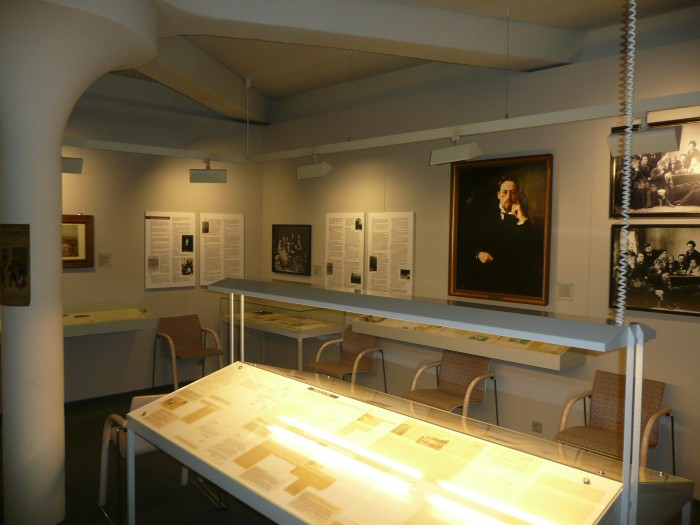
Chekhov Salon, Badenweiler | Photo: Bernd Gross
What makes ‘Errand’ a story rather than a historical account is the return of the young waiter who brings the champagne. When the young man comes to the room the next morning to bring a vase of roses and to pick up the champagne bottle and glasses, Olga, who has spent the remainder of the night sitting alone with Chekhov’s body, urges him to go into the town and find a mortician, someone who takes great pains in his work and whose manner is appropriately reserved. The young man listens as Olga tells him in great detail what to do. Meanwhile, the boy is thinking of something else; on the previous night, just after Chekhov died, the cork which the doctor had pushed back into the champagne bottle popped out again and now lies just at the toe of the boy’s shoe. He wants to bend over and pick it up but does not want to intrude by calling attention to himself. When Olga finishes the story-like description of the errand she wishes the boy to perform, he leans over, still holding the vase of roses, and without looking reaches down and closes the cork into his hand.

Chekhov Square, Badenweiler | Photo: Bernd Gross
It is this single, simple detail that makes ‘Errand’ a fitting tribute to the short-story writing art of both Chekhov and Carver. The cork is a concrete object in the world that the reader can almost tangibly feel as the boy closes his hand around it. However, it is the concrete act of picking up the cork that humanizes an otherwise abstract report of Chekhov’s death and ironically makes it alive. It is a purely objective description that resonates with powerful subjective feelings. It means nothing, but it means a great deal. It means that in the presence of death, living acts continue. It means that with the end, nothing must be left lying around. It means that although Chekhov is dead, the essence of his art remains. It embodies the most important lesson that Carver learned from Chekhov: that the smallest human act has dignity and that complex human meaning can be communicated by the simplest of gestures and the most trivial of objects.

Chekhov statue, Castle Hill, Badenweiler | Photo: Bernd Gross
CHARLES MAY: THREE BOOKS
CHEKHOV IN ‘MARA, MARIETTA’
FROM ‘MARA, MARIETTA’
Intermezzo 9: Zina
Zina’s in love with Chekhov. We met at the museum where she works: Anton Pavlovich’s house. The White Dacha has been going to the dogs ever since the Soviet collapse found it caught in the cultural crossfire between Russia and Ukraine. Three stories high, with its seven entrances and mix of round and rectangular windows, it’s a charming whimsy of a building. Zina was an excellent guide, situating Anton’s domesticity in the context of a life governed by kindness.

Chekhov Museum (restored), Yalta
The elusiveness of happiness, the nostalgia for what cannot be: Over a supper of varenyky in a cosy restaurant, we spoke of ‘The Lady with the Little Dog’, the only story Chekhov set in this town. Zina kept coming back to Anna on the pier, lingering after all the passengers have left, sniffing her flowers of welcome for no-one. What was she hoping to find, who was she hoping to see? All Chekhov’s genius, we agreed, lay in that lightness of touch.

The Pier, Yalta
̶ Do you have any idea, Sprague, how far you still are from the end?
̶ I do, Zina. And it’s only a girl like you, on a night like this, that allows me to go on.
The silence of her tongue gave way to the eloquence of her lips; in the light of present grace her doubt faded away: I’d whispered the words ‘complicated’ and ‘difficult’ in her ear, letting her know I’d caught her allusion to ‘The Lady with the Little Dog’.

Georges Stein, A Walk in the Gardens, 1912



